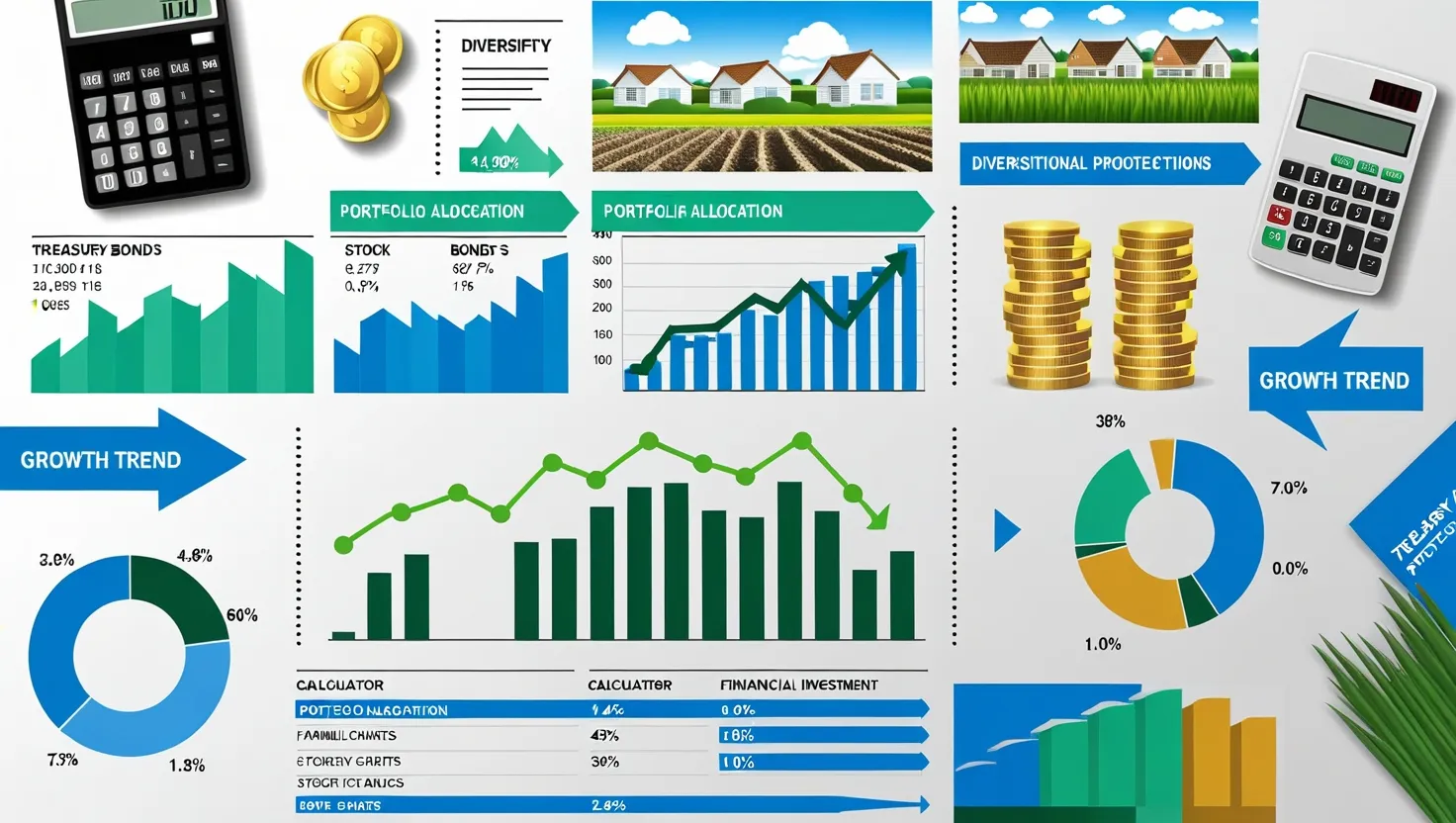Tax-Loss Harvesting: Your Secret Weapon for Smarter Investing
Ever feel like the taxman is always one step ahead, ready to take a bite out of your hard-earned investment gains? Well, what if I told you there's a way to turn the tables and make those inevitable market dips work in your favor? Enter tax-loss harvesting - the unsung hero of savvy investors everywhere.
Now, I know what you're thinking. "Tax-loss harvesting? Sounds about as exciting as watching paint dry." But trust me, this little trick can be a total game-changer for your portfolio. It's like finding money in your coat pocket, except instead of a few crumpled bills, we're talking potentially thousands in tax savings.
So, what's the deal with tax-loss harvesting? In a nutshell, it's all about making lemonade out of lemons. When one of your investments takes a nosedive, instead of just grumbling about it, you sell it off and use that loss to offset your gains elsewhere. It's like telling the IRS, "Hey, look at this loss I've got here. How about we call it even on those gains?"
Let's break it down with a real-world example. Say you bought 100 shares of "Awesome Tech Co." for $10,000, but now they're only worth $8,000. Ouch, right? But here's where the magic happens. You sell those shares, locking in a $2,000 loss. Now, let's say you also sold some "Fantastic Finance Inc." stocks for a $2,000 gain. Normally, you'd be on the hook for taxes on that gain. But with tax-loss harvesting, you can use your "Awesome Tech Co." loss to cancel out the "Fantastic Finance Inc." gain. Voila! No taxes on that $2,000.
But wait, there's more! If your losses outweigh your gains, you can even use up to $3,000 of those excess losses to offset your regular income. That's right, you can potentially lower your overall tax bill just by being smart about your investment losses. Any leftover losses? No problem. You can carry them forward to future years, like a tax-saving gift that keeps on giving.
Now, you might be wondering, "Is this just for the big shots with massive portfolios?" Not at all! Thanks to the wonders of modern tech, even us regular folks can get in on the action. There are now apps and robo-advisors that can do this stuff automatically for you. It's like having a tiny, tax-savvy robot in your pocket, constantly on the lookout for harvesting opportunities.
But here's the kicker - tax-loss harvesting isn't just a one-and-done deal. It's more like a year-round sport. The pros are always on the lookout for chances to harvest losses, especially during those volatile market periods when stocks are doing the cha-cha. When the market takes a dip, they see dollar signs - not in lost value, but in potential tax savings.
Let's paint a picture. Imagine you're an investor with a diverse portfolio. You've got some high-flying tech stocks, some steady blue-chips, maybe a few up-and-coming startups. Now, let's say the tech sector takes a hit. Your "NextGen Gadgets Inc." shares that you bought for $5,000 are now worth $4,000. Instead of just watching that paper loss and hoping for a rebound, you could sell those shares, lock in the $1,000 loss, and use it to offset gains from your other investments that are doing well.
But here's where it gets really interesting. After selling those "NextGen Gadgets Inc." shares, you don't just sit on the sidelines. Nope, you turn right around and invest that money in a similar (but not identical) tech stock or ETF. This way, you maintain your overall investment strategy and market exposure, but you've also scored yourself a nice little tax break. It's like having your cake and eating it too, but with stocks instead of cake.
Now, I can almost hear you asking, "But what about that wash sale rule I've heard about?" Good catch! The wash sale rule is like the IRS's way of saying, "Nice try, smartypants." It basically means you can't sell a security at a loss and then buy the same or a "substantially identical" security within 30 days before or after the sale. If you do, no tax loss for you!
But don't let that scare you off. The key is to replace your sold security with something similar enough to maintain your investment strategy, but different enough to avoid the wash sale rule. For example, if you sell shares in a tech company, you could buy shares in a different tech company or a tech sector ETF. It's like swapping one flavor of ice cream for another - still dessert, just a different taste.
Let's talk about the long game for a second. Tax-loss harvesting isn't just about saving a few bucks on this year's taxes. It's about building long-term wealth. Every dollar you save in taxes is a dollar you can reinvest, and over time, those reinvested dollars can grow into something substantial. It's like planting a money tree - each tax-saving "seed" you plant has the potential to grow into a mighty oak of returns.
Here's a mind-blowing thought: tax-loss harvesting can actually make market volatility work for you. When markets are bouncing around like a kangaroo on a trampoline, that's when you have the most opportunities to harvest losses. It's like being a bargain hunter at a store where the prices are constantly changing - more chances to snag a deal.
But remember, this isn't a set-it-and-forget-it kind of deal. It requires some attention and strategy. You need to keep an eye on your portfolio, understand your gains and losses, and be ready to act when opportunities arise. It's like being a chef in a kitchen - you need to know what ingredients you have, how they work together, and when to add each one to create the perfect dish.
Now, let's address the elephant in the room - taxes are complicated, and messing with them can feel scary. That's totally fair. But here's the thing: tax-loss harvesting isn't about gaming the system or doing anything shady. It's a completely legitimate strategy recognized by the IRS. It's more like using coupons at the grocery store - you're just being smart with your money.
That said, it's always a good idea to consult with a tax professional or financial advisor, especially if you're new to this. They can help you navigate the ins and outs, avoid potential pitfalls, and make sure you're maximizing your benefits. Think of them as your investing GPS - helping you find the most efficient route to your financial destination.
Let's wrap this up with a real-world scenario. Imagine you're a successful professional with a healthy income and a diverse investment portfolio. You've had a good year - your investments have grown, and you've even sold some property for a nice profit. But now you're looking at a hefty capital gains tax bill. This is where tax-loss harvesting can really shine.
By strategically selling some of your underperforming investments, you could potentially offset a significant portion of those capital gains. Maybe you've got some tech stocks that haven't lived up to the hype, or some international investments that have been struggling. Selling these at a loss could save you thousands in taxes, money that you can then reinvest to keep growing your wealth.
In the end, tax-loss harvesting is all about working smarter, not harder, with your investments. It's about seeing the silver lining in market downturns and using the tax code to your advantage. It's a way to potentially boost your after-tax returns without changing your overall investment strategy.
So the next time you see red in your portfolio, don't just see losses - see opportunities. With tax-loss harvesting in your toolkit, you can turn those paper losses into real-world tax savings, keeping more of your hard-earned money working for you. It's not just about minimizing losses; it's about maximizing the efficiency of every dollar you invest. And in the long run, that can make a world of difference to your financial future.






